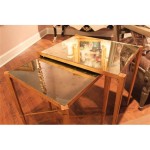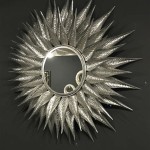How To Mirror A Drive in Windows 10
Mirroring a drive in Windows 10 creates a real-time copy of your data on a second drive. This offers redundancy and data protection in case of drive failure. If the primary drive fails, the mirrored drive can take over seamlessly, minimizing downtime and preventing data loss. This guide outlines the process of setting up and managing a mirrored drive, also known as RAID 1, in Windows 10.
Using Disk Management for Mirroring
Disk Management is a built-in Windows utility that allows for comprehensive drive management, including creating mirrored volumes. This method is generally preferred for its ease of use and accessibility.
To access Disk Management, right-click the Start button and select "Disk Management". A window will appear displaying all connected storage devices and their partitions. Ensure both the source drive (containing data to be mirrored) and the target drive (where the mirror will reside) are connected and recognized by the system.
Right-click on the source drive and select "Add Mirror". A window will pop up allowing selection of the target drive. Choose the desired target drive and click "Add Mirror". The mirroring process will begin, and the progress will be displayed in the Disk Management window.
It is crucial to understand that the target drive must have equal or greater capacity than the source drive. Any data existing on the target drive will be erased during the mirroring process. Therefore, backing up any important data from the target drive beforehand is strongly recommended.
Using Storage Spaces for Mirroring
Storage Spaces is another Windows feature that allows for combining multiple physical drives into a single virtual drive, offering various resiliency options including mirroring. This is useful for users with multiple drives and allows for greater flexibility in drive configuration.
To use Storage Spaces, search for "Storage Spaces" in the Windows search bar and open the application. Click "Create a new pool and storage space". Select the drives to be included in the mirror and choose "Two-way mirror" as the resiliency type. Follow the on-screen prompts to configure the storage space name, drive letter, and file system.
Storage Spaces offers more advanced features like the ability to add or remove drives from the pool later, providing greater scalability and flexibility. However, it may be slightly more complex to configure compared to Disk Management for simple mirroring scenarios.
Considerations and Best Practices
While mirroring provides excellent data protection, it is important to understand its limitations and follow best practices for optimal performance and reliability.
Mirroring protects against drive failures but not against data corruption or accidental deletion. Regular backups are still crucial for comprehensive data protection. Consider implementing a 3-2-1 backup strategy, keeping three copies of your data on two different media, with one copy offsite.
Regularly monitor the health of both drives in the mirrored set. Disk Management and Storage Spaces provide tools to check drive status. Replace failing drives promptly to maintain redundancy.
Consider the performance implications of mirroring. While read speeds might improve, write speeds could be slightly impacted as data is written to both drives simultaneously. Ensure the drives used for mirroring are of sufficient speed and quality to meet performance requirements.
Choosing the right method for mirroring depends on specific needs and technical proficiency. Disk Management is generally simpler for creating basic mirrored volumes, while Storage Spaces offers more advanced features and flexibility for managing multiple drives.
Understanding the process, considerations, and best practices associated with mirroring ensures data protection and system stability. Implementing a comprehensive backup strategy alongside mirroring offers a robust solution for protecting valuable data against a range of potential threats.
Troubleshooting Mirrored Drives
Occasionally, issues can arise with mirrored drives, such as a drive going offline or the mirror becoming broken. Here's how to address common problems.
If a drive in the mirrored set goes offline, Disk Management or Storage Spaces will display its status as "Failed" or "Missing." Replace the failed drive with a new one, and the system will automatically rebuild the mirror onto the new drive. This process may take some time depending on the drive size and system performance.
If the mirror becomes broken, meaning the synchronization between the two drives is lost, it might be necessary to break the mirror and recreate it. Be aware that breaking a mirror will remove the redundancy and leave you with a single drive. Back up your data before undertaking this process if possible.
For complex issues or if unsure how to proceed, consult Microsoft's official documentation or seek assistance from a qualified IT professional. Improperly managing mirrored drives can lead to data loss, so caution is advised.

How To Mirror A Hard Drive In Windows 10 Easeus

How To Mirror A Hard Drive In Windows 10 Easeus

How To Mirror Boot Hard Drive On Windows 10 Legacy Or Uefi Wintips Org

How To Mirror A Hard Drive In Windows 10 Easy Steps

How To Mirror Boot Hard Drive On Windows 10 Legacy Or Uefi Wintips Org

How To Mirror Boot Hard Drive On Windows 10 Legacy Or Uefi Bulldog Tech Inc

How To Mirror C Drive Windows 10

How To Mirror A Hard Drive In Windows 10 Easeus

How To Mirror Boot Drive On Windows 10 For Uefi Minitool

How To Add Mirror Volume Drive Windows 10








